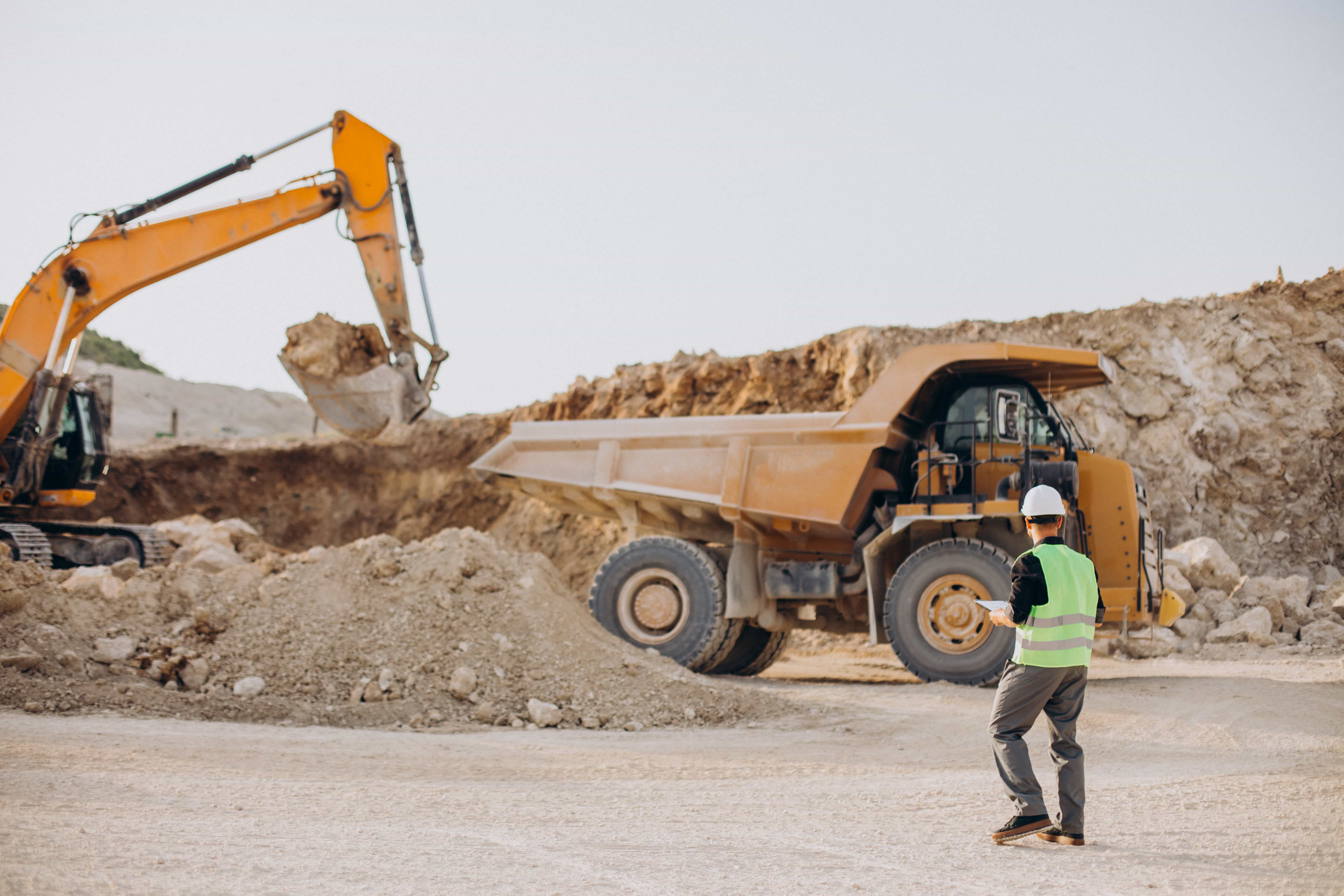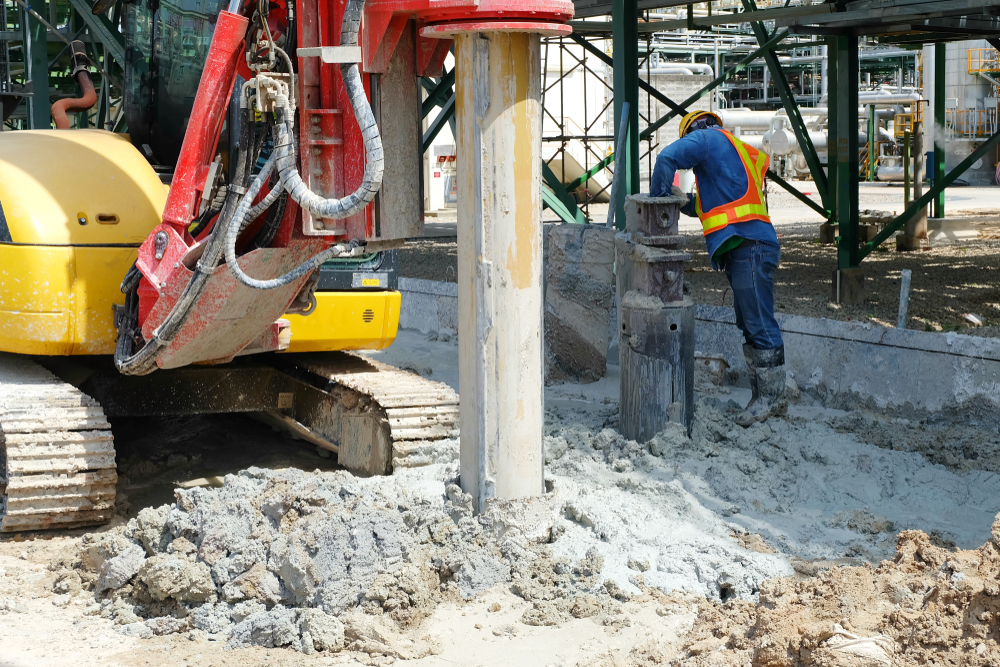The Significance of Geotechnical Engineering in Attending To Environmental Difficulties and Enhancing Building Security
Geotechnical design offers as a keystone in the junction of ecological stewardship and building security, giving critical insights into the behavior of dirt and rock under different problems. By carrying out strategic site examinations and tailored reduction measures, geotechnical engineers play a vital function in guarding both human lives and ecological stability.

Role of Geotechnical Design
Geotechnical design plays a critical duty in the layout and building and construction of framework by resolving the habits of soil and rock materials under various problems. This area of engineering is crucial for recognizing the communication between structures and the ground, that includes establishing the load-bearing ability of soil, assessing security, and forecasting prospective settlement or failure.
Geotechnical designers are accountable for carrying out site examinations, which include sampling and testing dirt and rock to collect information on their physical and chemical buildings. This details is essential for designing structures, preserving wall surfaces, and various other earth-retaining structures that guarantee security and durability. Geotechnical engineering educates the option of proper building and construction methods and materials, thus lessening threats linked with soil habits.
Furthermore, the assimilation of geotechnical design concepts into metropolitan planning and environmental monitoring is critical for dealing with difficulties such as ground contamination and groundwater administration. By recognizing geotechnical elements, designers can create sustainable options that boost the resilience of facilities versus all-natural hazards, while likewise advertising ecological stewardship. Ultimately, the function of geotechnical design is crucial for achieving risk-free, long lasting, and eco conscious building methods.
Dirt Disintegration Mitigation
Soil disintegration postures a significant risk to both environmental stability and facilities honesty, influencing approximately 24 billion lots of abundant soil lost every year worldwide. This phenomenon is intensified by aspects such as logging, urbanization, and bad farming methods. Geotechnical design plays an essential duty in creating efficient dirt erosion mitigation techniques that protect both the environment and construction projects.
One approach entails the implementation of disintegration control approaches such as plant life growing, which supports soil through origin systems. In addition, the building and construction of preserving wall surfaces and balconies can effectively reduce surface drainage and secure prone areas from erosion. Correct drain design is additionally critical; it decreases water build-up and directs excess runoff far from vital structures.
Moreover, geotechnical designers utilize soil stablizing strategies, such as the application of geotextiles and naturally degradable mats, to enhance dirt cohesion and avoid degradation - geotechnical engineer description. Regular monitoring and analysis of erosion-prone websites allow timely treatments, making sure long-term sustainability. By incorporating these strategies, geotechnical design not only alleviates the impacts of dirt disintegration however additionally contributes to the strength of facilities versus environmental difficulties, ultimately promoting a more secure and much more sustainable developed setting
Groundwater Protection Methods
Groundwater works as a crucial source for drinking water, agriculture, and commercial processes, making its security crucial for environmental sustainability and public health and wellness. Reliable groundwater protection methods are critical in reducing contamination dangers and making certain the longevity of this resource.

Normal tracking of groundwater quality is additionally vital, enabling very early detection of contamination resources and helping with prompt remediation efforts. Using sophisticated modern technologies, such as geophysical surveys and remote picking up, aids in recognizing potential hazards to groundwater reserves.
In addition, public education and stakeholder involvement are essential, cultivating community assistance for groundwater defense efforts. about geotechnical engineering. By incorporating regulatory procedures, technical developments, and area participation, we can create a thorough framework that safeguards groundwater sources while promoting sustainable advancement and building and construction practices
Landslide Danger Monitoring
Landslides pose considerable dangers to both human safety and security and infrastructure, making efficient danger monitoring strategies vital. Geotechnical design plays an all about geotechnical engineering essential function in determining, examining, and mitigating landslide threats. A comprehensive understanding of slope stability, soil mechanics, and hydrology is important for establishing efficient danger monitoring strategies.
The initial step in landslide threat monitoring entails thorough site examinations, which include geological mapping and dirt screening. These examinations aid designers examine the possibility for landslides by determining important variables such as incline angles, Bonuses soil composition, and water web content. Using sophisticated innovations such as remote noticing and geophysical surveys can enhance the precision of these analyses.
When risks are identified, appropriate reduction actions can be carried out. These may include design remedies such as maintaining walls, drainage systems, and incline stabilization techniques. Furthermore, monitoring systems need to be developed to discover signs of ground activity and modifications in water levels, permitting for positive interventions.

Enhancing Building Security
Building sites typically provide a myriad of risks that can endanger employee safety and job stability. Geotechnical design plays a critical role in enhancing building safety and security by offering necessary understandings right into subsurface conditions. Through comprehensive soil and rock analysis, geotechnical designers can recognize prospective dangers, such as soil instability, groundwater concerns, and seismic susceptabilities, which may compromise the safety and security of building and construction tasks.
Executing geotechnical remedies, such as proper structure design and the use of preserving structures, alleviates these risks substantially. These remedies not only make sure the stability of the structures being constructed yet also develop a more secure working environment for building and construction employees.
Furthermore, promoting a society of safety and security via training and adherence to developed safety protocols further enhances building site security. By incorporating geotechnical experience right into the preparation and implementation stages, building and construction tasks can attain greater safety and security criteria, inevitably shielding employees and making sure effective job completion.
Final Thought
In conclusion, geotechnical design serves as a critical technique in dealing with visit the site ecological difficulties and advertising building safety. With effective soil disintegration mitigation, groundwater defense techniques, and landslide threat management, geotechnical designers add to the advancement of resistant infrastructure.
Geotechnical design offers as a foundation in the junction of environmental stewardship and building safety and security, offering essential insights right into the actions of soil and rock under different problems. Geotechnical engineering notifies the option of ideal construction techniques and products, thereby lessening threats associated with soil habits.
Geotechnical design plays a crucial role in establishing efficient dirt disintegration mitigation techniques that secure both the setting and building and construction projects.
Furthermore, geotechnical designers utilize dirt stablizing strategies, such as the application of geotextiles and biodegradable mats, to enhance soil cohesion and stop destruction. Via thorough soil and rock analysis, geotechnical engineers can identify potential risks, such as soil instability, groundwater issues, and seismic vulnerabilities, which may jeopardize the security of building tasks.